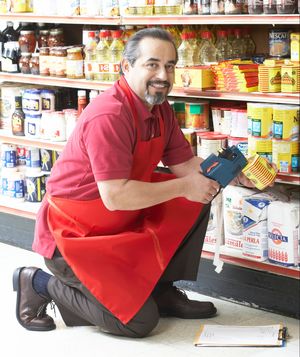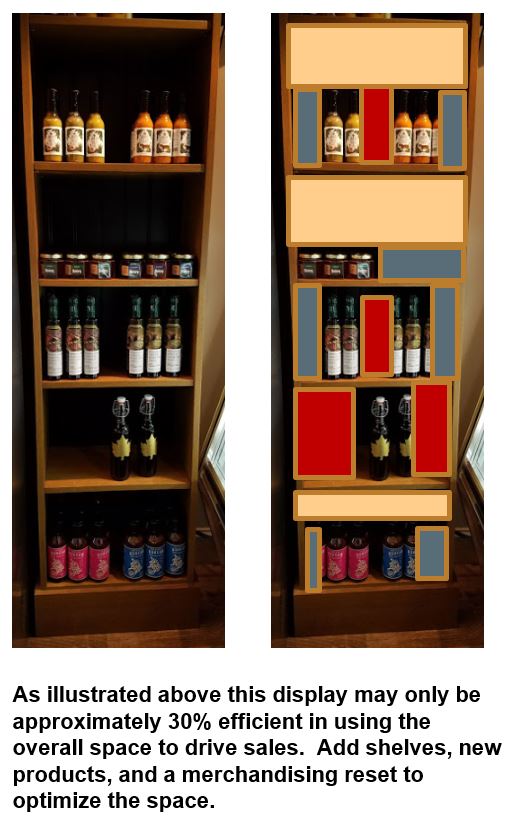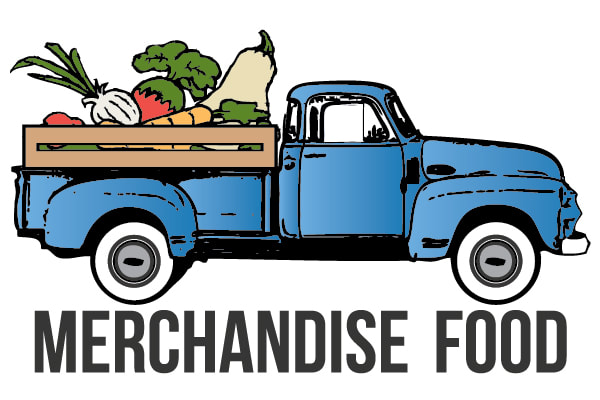
Every retail food market, grocer, and eatery is likely responsible for limiting their own sales. A recurring food retailing challenge is a limited product mix meaning too few items to appeal to customers, meet their holistic shopping needs, and to simply appeal to more people often enough to drive greater impulse purchases. If sales are the life blood of a retail food store, you must continually ask yourself, "What hurdles have I placed in the way of my customers to buy more food from me?"
Consider a financially successful week in any retail food store like a difficult journey to cross a hot dry desert. The logical threat of dehydration would make us very intentional to properly prepare enough provisions and water to reach our goal successfully. Without adequate water we would become tired and weary barely able to trek onward. Our resources would deplete quickly making a trip more difficult than necessary. Without adequate water, many may never see the other side of the dessert, and others may barely just cross exhausted, weak, and suffering a major blow to their short or long term health. Every week, a similar situation happens to food retailers across America who instead of water lack the life blood of retailing: an adequate number of products to sell to generate the necessary profitable transactions to succeed. Not just products but enough products to prevent regular out of stock situations. Not just products but a healthy variety of products to appeal to a larger audience. Not just products but the products our customers need. Not just a fun mix of "on-brand" products but a comprehensive product mix without major gaps that would make it inconvenient to visit our store. When confronted with this idea, many of my clients often look at me crazily and say "Where are we going to fit more products?" Great question! For retail environments with expansive space we add fixtures and shelves. For many the answer is much easier, "On your existing shelves." I'll say.
Take a look at this up-close visual example of 3 simple common sense food merchandising problems on our shelves which if not solved and optimized will regularly limit our sustainability and financial success as a food retailer. The goal of optimal food merchandising sets is to ensure shelves look entirely full from top to bottom. The varied color segments represent three common but distinct limitations outlined below.
Consider a financially successful week in any retail food store like a difficult journey to cross a hot dry desert. The logical threat of dehydration would make us very intentional to properly prepare enough provisions and water to reach our goal successfully. Without adequate water we would become tired and weary barely able to trek onward. Our resources would deplete quickly making a trip more difficult than necessary. Without adequate water, many may never see the other side of the dessert, and others may barely just cross exhausted, weak, and suffering a major blow to their short or long term health. Every week, a similar situation happens to food retailers across America who instead of water lack the life blood of retailing: an adequate number of products to sell to generate the necessary profitable transactions to succeed. Not just products but enough products to prevent regular out of stock situations. Not just products but a healthy variety of products to appeal to a larger audience. Not just products but the products our customers need. Not just a fun mix of "on-brand" products but a comprehensive product mix without major gaps that would make it inconvenient to visit our store. When confronted with this idea, many of my clients often look at me crazily and say "Where are we going to fit more products?" Great question! For retail environments with expansive space we add fixtures and shelves. For many the answer is much easier, "On your existing shelves." I'll say.
Take a look at this up-close visual example of 3 simple common sense food merchandising problems on our shelves which if not solved and optimized will regularly limit our sustainability and financial success as a food retailer. The goal of optimal food merchandising sets is to ensure shelves look entirely full from top to bottom. The varied color segments represent three common but distinct limitations outlined below.

Unfilled Shelves: The areas in red illustrate empty horizontal shelf facings. Products sell best when presented in mass. Each impression of a product helps to sell the one next to it. Often retailers have significant inventory stacked invisibly behind the visible front row with empty spaces surrounding. Use your inventory and space effectively and visually fill shelves fully at all times.

Shelving Gaps: Retailers often limit themselves simply by not ordering enough shelves to truly use their space to their advantage. Ordering 2-3 more shelves for this unit (and any others throughout the store as necessary) will instantly expand the number of possible facings or product varieties.

Unnecessary Duplicate Products: Shelves can feature duplicate facings of the items, but often adding new varieties of items will help optimize sales as well. At some point sales will plateau whether you have 2 or 8 facings of certain products because they simply have limited marketability. Optimize this by decreasing facings of this item and adding new items instead to fill the space. In small size markets, variety in the space will likely add the opportunity for more transactions. Guests will simply run out of things to buy if the selection is static and limited.
•The example features one regular wooden shelving unit, but represents opportunities in all store retail shelving areas including those dry units, inside service cases and door refrigerated cases.
In small markets shelving and space must be used to it’s fullest potential. Consider how shops in Manhattan must use vertical space and shelving in creative methods simply to “fit” everything into the store and to ensure they can be profitable at a level to cover high rent / real estate expenses.
Keep in mind specialty or gourmet food products or boutique type markets with very high margins may have the luxury of taking a more creative design oriented approach to placing products on their shelves. In these circumstances the relative higher revenue of selling a smaller number of items will still generate the profitability for the business to remain successful without having to consider how to optimize every square foot of space.
For the rest of us, staying focused on making your space work for you will involve setting your displays appropriates, keeping them filled, training and hiring the right employees, and regular review. While dynamic grocers may be using plan-o-grams and big data to solve these challenges, smaller retailers can move in this direction by dedicating a set time to make the changes and simply using some good old fashioned common sense!
Our best luck in making your food merchandising efforts more profitable in the year to come.
•The example features one regular wooden shelving unit, but represents opportunities in all store retail shelving areas including those dry units, inside service cases and door refrigerated cases.
In small markets shelving and space must be used to it’s fullest potential. Consider how shops in Manhattan must use vertical space and shelving in creative methods simply to “fit” everything into the store and to ensure they can be profitable at a level to cover high rent / real estate expenses.
Keep in mind specialty or gourmet food products or boutique type markets with very high margins may have the luxury of taking a more creative design oriented approach to placing products on their shelves. In these circumstances the relative higher revenue of selling a smaller number of items will still generate the profitability for the business to remain successful without having to consider how to optimize every square foot of space.
For the rest of us, staying focused on making your space work for you will involve setting your displays appropriates, keeping them filled, training and hiring the right employees, and regular review. While dynamic grocers may be using plan-o-grams and big data to solve these challenges, smaller retailers can move in this direction by dedicating a set time to make the changes and simply using some good old fashioned common sense!
Our best luck in making your food merchandising efforts more profitable in the year to come.
Learn more now about how Merchandise Food helps retailers reach greater potential.



 RSS Feed
RSS Feed
